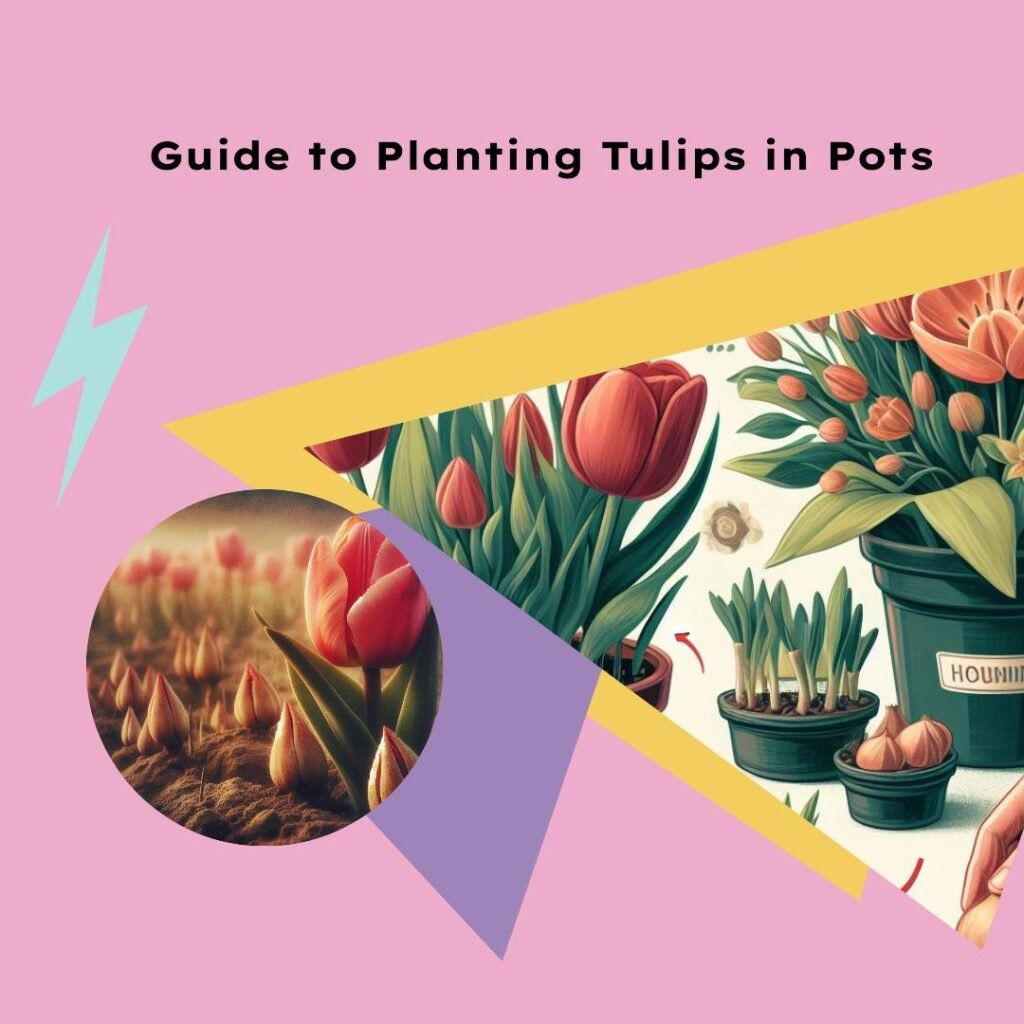
Tulips, with their vibrant colors and iconic blooms, are a favorite among gardeners. While they’re typically grown in gardens, they can also thrive in pots, adding beauty to any patio or balcony. This guide offers detailed instructions, including technical parameters, to ensure successful tulip cultivation in pots.
1. Pot Selection and Sizing
Choosing the right pot is crucial for the health and growth of tulips. Opt for pots that are at least 8.5 inches (22 cm) in diameter, providing ample space for root development. Additionally, pots should be 6.5–18 inches (17–46 cm) deep to accommodate tulip bulbs comfortably. Ensure pots have adequate drainage holes to prevent waterlogging, which can lead to bulb rot.
2. Soil Composition
Create a well-draining soil mix by combining perlite and vermiculite potting mix. This blend promotes healthy root growth while preventing waterlogging. Avoid using garden soil, as it may lack proper drainage and could harbor pests or diseases detrimental to tulips.
3. Planting Technique
Plant tulip bulbs with the pointed end facing upward, spacing them approximately 1 inch (2.5 cm) apart. The number of bulbs per pot depends on its size, ranging from 2 to 25 bulbs for optimal spacing and aesthetics. Ensure bulbs are planted deep enough to anchor them securely in the soil.
4. Soil Coverage and Watering
After planting, cover bulbs with 5–8 inches (13–20 cm) of potting soil. Water thoroughly to settle the bulbs and promote root establishment. Ensure excess water drains freely from the pot to prevent waterlogging, which can cause bulb rot and compromise plant health.
5. Additional Considerations
For a layered effect or extended blooming period, consider adding another layer of bulbs above the first layer before covering with soil. This technique enhances visual appeal and prolongs the flowering season. Monitor soil moisture levels regularly, adjusting watering frequency as needed to maintain optimal growing conditions.
6. Environmental Factors
Place potted tulips in a cool location for 12-16 weeks to facilitate the dormancy phase necessary for blooming. Store pots in a refrigerator or cellar with temperatures between 45–55 °F (7–13 °C) to simulate winter conditions. Once dormancy is complete, transfer pots to a location with consistent temperatures of 60–70 °F (16–21 °C) to initiate flowering.
7. Blooming and Maintenance
With proper care, tulips will reward you with beautiful blooms in spring. Monitor plant growth and inspect for signs of pests or diseases, addressing any issues promptly to prevent damage. Deadhead spent flowers to promote continued blooming and remove yellowing foliage after flowering to maintain plant health.
Conclusion
Planting tulips in pots is a rewarding endeavor that allows you to enjoy their beauty up close. By adhering to technical parameters and following these guidelines, you can cultivate healthy tulips that brighten your outdoor space come springtime. Whether you’re a novice or experienced gardener, growing tulips in pots is an accessible and enjoyable gardening project for all enthusiasts.